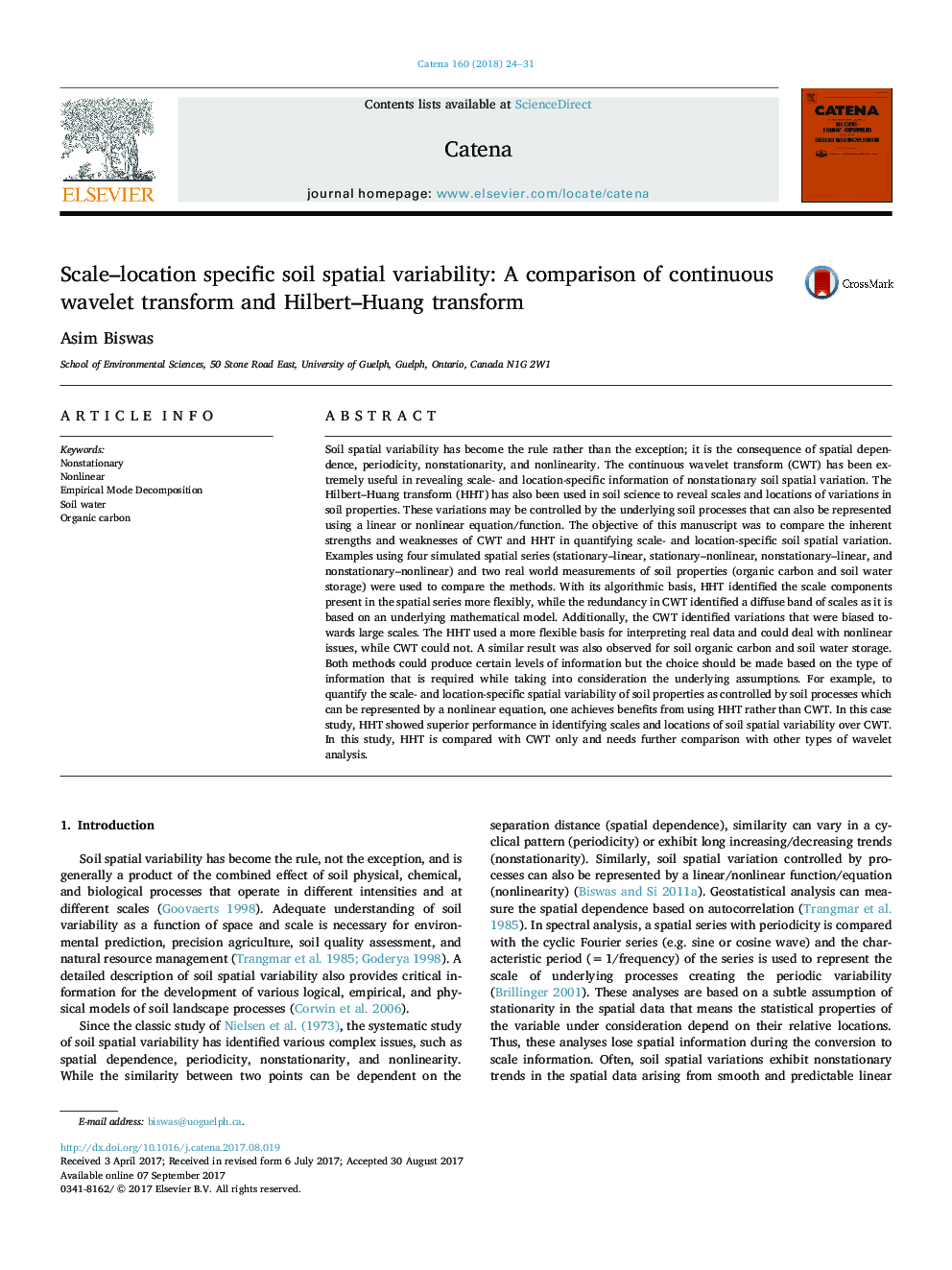| کد مقاله | کد نشریه | سال انتشار | مقاله انگلیسی | نسخه تمام متن |
|---|---|---|---|---|
| 5770022 | 1629194 | 2018 | 8 صفحه PDF | دانلود رایگان |
- Continuous wavelet transform (CWT) and Hilbert-Huang transform (HHT) were compared
- Comparison was done using simulated spatial series and real-world soil measurements
- HHT identified scale-location soil spatial variation more flexibly & accuracy than CWT
- HHT dealt with nonlinear & nonstationary spatial series while CWT dealt with later
Soil spatial variability has become the rule rather than the exception; it is the consequence of spatial dependence, periodicity, nonstationarity, and nonlinearity. The continuous wavelet transform (CWT) has been extremely useful in revealing scale- and location-specific information of nonstationary soil spatial variation. The Hilbert-Huang transform (HHT) has also been used in soil science to reveal scales and locations of variations in soil properties. These variations may be controlled by the underlying soil processes that can also be represented using a linear or nonlinear equation/function. The objective of this manuscript was to compare the inherent strengths and weaknesses of CWT and HHT in quantifying scale- and location-specific soil spatial variation. Examples using four simulated spatial series (stationary-linear, stationary-nonlinear, nonstationary-linear, and nonstationary-nonlinear) and two real world measurements of soil properties (organic carbon and soil water storage) were used to compare the methods. With its algorithmic basis, HHT identified the scale components present in the spatial series more flexibly, while the redundancy in CWT identified a diffuse band of scales as it is based on an underlying mathematical model. Additionally, the CWT identified variations that were biased towards large scales. The HHT used a more flexible basis for interpreting real data and could deal with nonlinear issues, while CWT could not. A similar result was also observed for soil organic carbon and soil water storage. Both methods could produce certain levels of information but the choice should be made based on the type of information that is required while taking into consideration the underlying assumptions. For example, to quantify the scale- and location-specific spatial variability of soil properties as controlled by soil processes which can be represented by a nonlinear equation, one achieves benefits from using HHT rather than CWT. In this case study, HHT showed superior performance in identifying scales and locations of soil spatial variability over CWT. In this study, HHT is compared with CWT only and needs further comparison with other types of wavelet analysis.
Journal: CATENA - Volume 160, January 2018, Pages 24-31
